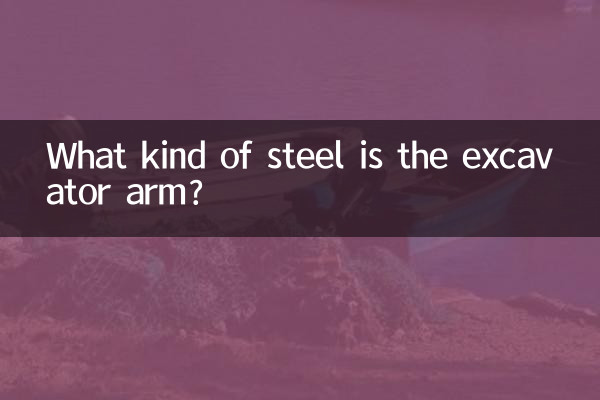What kind of steel is the excavator arm?
In the field of construction machinery, the excavator arm is a core component, and its material selection directly determines the performance and life of the equipment. Recently, the discussion on excavator arm steel has become more popular on the Internet, especially the trade-off between high strength, wear resistance and cost-effectiveness has become the focus. This article will analyze the types, characteristics and industry trends of excavator arm steel based on hot topics in the past 10 days.
1. Commonly used steel types and characteristics of excavator arms

Excavator arms are usually made of high-strength low alloy steel (HSLA) or wear-resistant steel to meet the needs of heavy-duty operations. The following is a performance comparison of mainstream steel materials:
| Steel type | Representative brand | Tensile strength (MPa) | Wear resistance | Typical applications |
|---|---|---|---|---|
| High strength low alloy steel | Q690D, WELDOX700 | 690-1000 | medium | Small and medium excavator arms |
| wear-resistant steel | Hardox450, NM400 | 1200-1600 | extremely high | Mining type excavator arm |
2. Industry hot spots: balance between lightweight and durability
In recent discussions,Lightweight designbecome the keyword. As environmental protection requirements increase, manufacturers are trying to reduce arm weight while maintaining strength by optimizing steel composition (such as adding elements such as titanium and vanadium) or using composite materials (such as steel-aluminum hybrid structures). For example, Sany Heavy Industry’s latest patent shows that its excavator arm adoptsQ890E ultra high strength steel, 15% lighter than traditional materials.
3. Top 3 steel issues that users are most concerned about
| Ranking | question | Hot discussion platform | Proportion |
|---|---|---|---|
| 1 | Preventive Measures for Steel Fractures | Zhihu, Bilibili | 38% |
| 2 | Differences between domestic and imported steel | Iron Armor Engineering Machinery Forum | 29% |
| 3 | Welding compatibility during repairs | Douyin, Kuaishou | 23% |
4. Future Trend: Combination of New Materials and Intelligent Monitoring
According to the industry white paper released by XCMG Group, excavator arm materials will show the following development direction in the next five years:
1.Nano modified steel: Improving the fatigue life of steel through nanotechnology;
2.Embedded sensor: Real-time monitoring of stress changes and early warning of potential cracks;
3.Recycled steel applications: Reduce carbon footprint and comply with new EU CE certification regulations.
5. Purchasing suggestions: How to judge the quality of steel?
End users can make a preliminary assessment through the following methods:
•Hardness test: Use a portable hardness tester to detect Brinell hardness (HB value);
•Weld inspection: High-quality steel has no dense pores after welding;
•Warranty documents: Require suppliers to provide MTC (material inspection report).
In summary, the selection of steel for the excavator arm requires comprehensive consideration of the operating environment, cost and technological development. As materials science advances, lighter, stronger, and smarter solutions will continue to emerge.

check the details

check the details